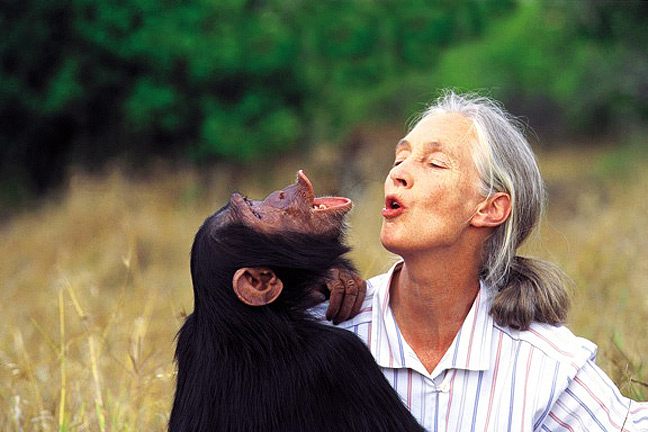Sometimes researchers feed wildlife in order to closely observe and explore the characteristics, habitat, migratory patterns, and behaviours of different animals and species. Some people speculate the validity of research feeding, as animal interaction with humans may change the behaviours of the animals.
 Jane Goodall’s research on chimpanzees in the 1960s was a revolutionary discovery, as she witnessed a chimp making a tool from a stick to gather termites for food. At that time, tool making was thought to be a behaviour that only existed in humans. In order to Goodall to observe these chimpanzees, she needed to gain their trust. Thus, Goodall used bananas to lure the chimpanzees and was eventually accepted as a part of their tribe. Without the banana, the opportunity to observe the chimpanzees would have been slim and the world would not have the knowledge that human behaviours can exist in some animals.
Jane Goodall’s research on chimpanzees in the 1960s was a revolutionary discovery, as she witnessed a chimp making a tool from a stick to gather termites for food. At that time, tool making was thought to be a behaviour that only existed in humans. In order to Goodall to observe these chimpanzees, she needed to gain their trust. Thus, Goodall used bananas to lure the chimpanzees and was eventually accepted as a part of their tribe. Without the banana, the opportunity to observe the chimpanzees would have been slim and the world would not have the knowledge that human behaviours can exist in some animals.
Below is a short documentary of Jane Goodall’s work:
https://www.youtube.com/watch?v=LKyrLFyOi04
——–
 Jane Goodall’s research involved close interaction and maintaining good relationships with animals. However, research feeding also encompasses indirect feeding to observe animals. An example is Brittingham and Temple’s study on chickadees and the dependency of bird feeders in the winter. In their study, they placed bird feeders in two different locations that were 50km apart to observe the number of chickadees who visited those locations. Without interacting with the birds, they found that the survival rates of birds who used bird feeders were similar to birds that did not use them.
Jane Goodall’s research involved close interaction and maintaining good relationships with animals. However, research feeding also encompasses indirect feeding to observe animals. An example is Brittingham and Temple’s study on chickadees and the dependency of bird feeders in the winter. In their study, they placed bird feeders in two different locations that were 50km apart to observe the number of chickadees who visited those locations. Without interacting with the birds, they found that the survival rates of birds who used bird feeders were similar to birds that did not use them.
